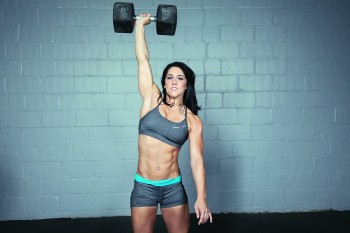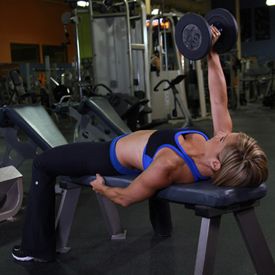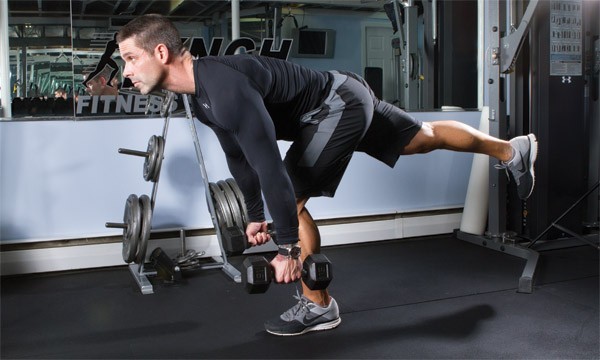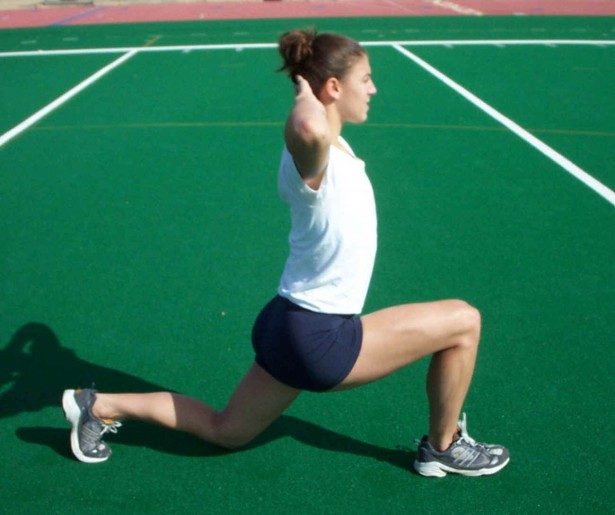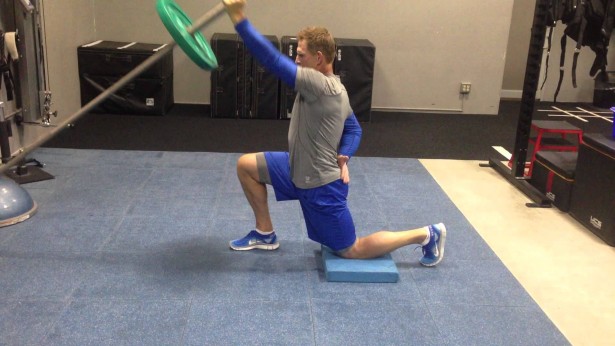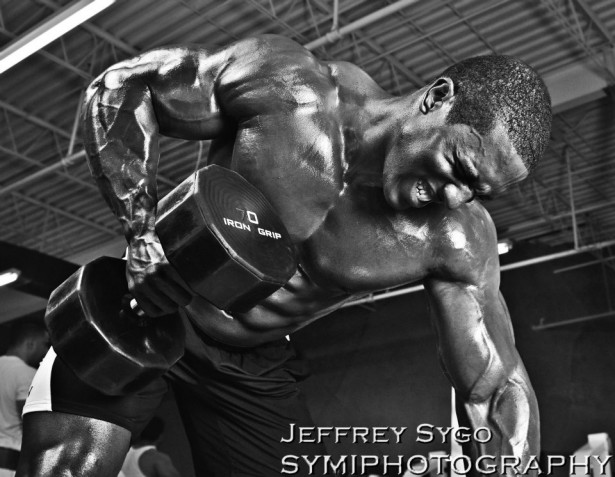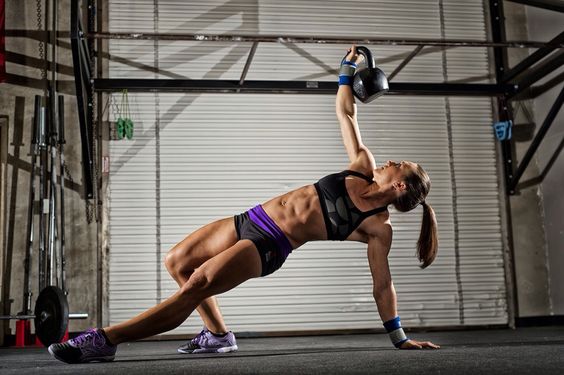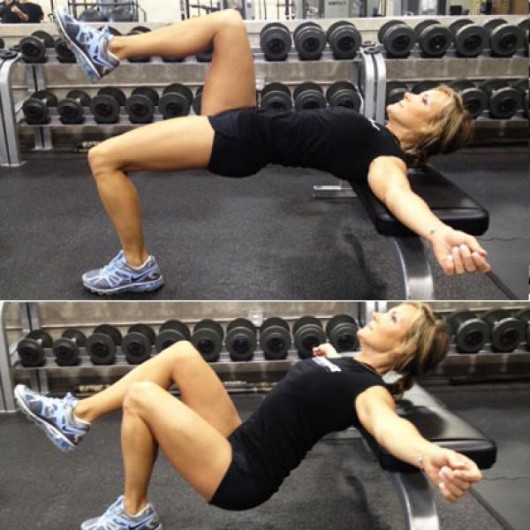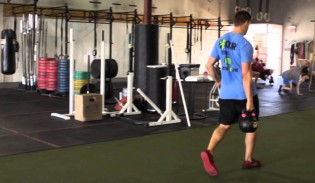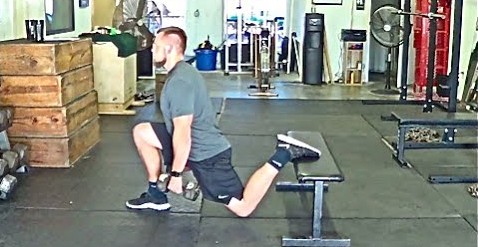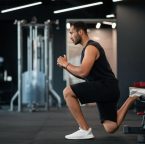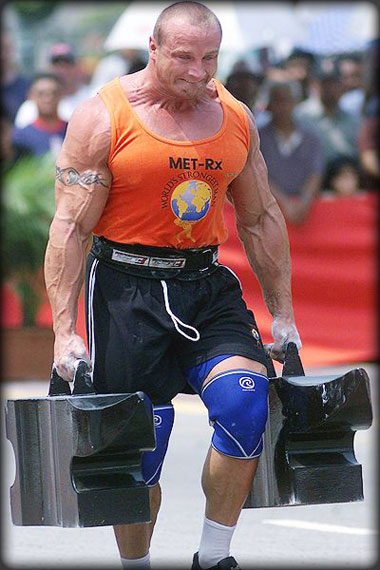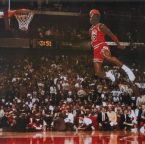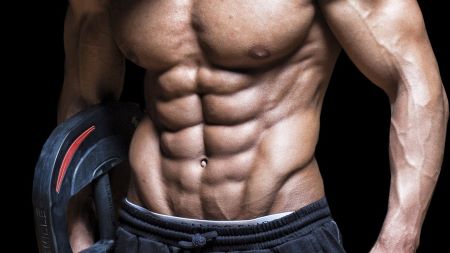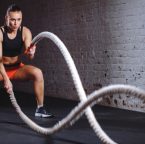Unilateral training is something we should all be doing, but most of us fail to do so.
Whether you are an athlete, bodybuilder, crossfitter or even a desk jockey who is new to exercising, there are benefits to be had from unilateral training that should not be ignored.
What is Unilateral Training?
Unilateral training focuses on one side of the body at a time, rather than using both sides simultaneously as you would in bilateral training.
This type of exercise is especially useful for correcting muscle imbalances, enhancing coordination, and increasing core stability.
Unilateral training can include exercises like single-leg deadlifts, one-arm rows, or Bulgarian split squats. It’s a smart way to round out a workout regimen that already includes bilateral exercises like regular squats and deadlifts.
Benefits of Unilateral Training
Unilateral training is like the unsung hero of the workout world. Essentially, it involves exercising one limb or one side of your body at a time. Think single-leg squats or one-arm rows.
Why should you care? Well, for starters, it’s a great way to weed out any imbalances. You might not even realize it, but one side of your body is probably doing more work in those bilateral exercises, like regular squats or bench presses.
Another plus is it’s a killer way to engage your core. When you’re balancing on one leg or lifting with one arm, your core is working overtime to keep you stable. It’s also pretty handy for functional fitness. Let’s be real, how often do you lift something heavy using both arms and legs perfectly in sync in everyday life?
Lastly, it’s a great option for when you’re dealing with an injury. If one arm or leg is out of commission, you can still train the other side, which can actually help with the healing process. So all in all, throwing some unilateral moves into your routine can offer some real perks.
The 10 Best Unilateral Exercises
So now that you know what the advantages are, here are the 10 best unilateral exercises to choose from. Be sure to work at least some of these into your routine.
10 Single Arm Bench Press
The single-arm bench press is a pretty solid pick if you’re looking to add some unilateral work to your routine. First off, it targets your chest, shoulders, and triceps like a traditional bench press, but there’s a twist. Because you’re lifting with just one arm, your core has to work extra hard to keep your body from twisting or dipping to one side. So, you’re essentially getting a strength workout and a mini core workout all in one.
Another bonus is it helps you identify and work on muscle imbalances. If you find lifting a certain weight easier on one side compared to the other, that’s a cue to give the weaker side some extra love. This kind of targeted work can help improve your performance in bilateral exercises down the line. Overall, the single-arm bench press can add a new dimension to your workouts, tackling strength, stability, and balance all at once.
How To Perform
Lie on a bench with a dumbbell in one hand, arm extended above your chest. The other arm can rest at your side or on your hip. Plant your feet and engage your core.
Lower the dumbbell to your chest, then push it back up, focusing on your chest, tricep, and shoulder muscles. Keep your core tight for stability. Complete your set, then switch arms.
9 Single Leg Deadlift
The single-leg deadlift is a top-notch choice for unilateral training. It targets your hamstrings, glutes, and lower back, while also forcing your core and stabilizer muscles to kick in for balance. This makes it a full-package exercise that’s as functional as it is effective for strength building.
Another cool thing is it can help you even out muscle imbalances between your legs. If one leg feels weaker or less coordinated during the movement, you’ll know to give it a little extra attention in your training. Overall, adding single-leg deadlifts can offer a balanced, effective workout that hits multiple key areas.
How To Perform
Start by standing upright, holding a dumbbell or kettlebell in one hand. Plant the foot on the opposite side firmly on the ground. Slightly bend the knee of your standing leg and engage your core.
Keeping your back straight, hinge at the hips to lower the weight toward the ground while extending the leg on the same side as the weight behind you.
As you lower the weight, aim to keep your back straight and your hips square to the ground. Once you’ve gone as far as your flexibility allows, reverse the motion to return to the starting position.
Finish your set on one leg, then switch to the other. The key here is control and balance, so no rushing through the reps.
8 Lunges
Lunges are a classic lower-body exercise that target your quads, hamstrings, and glutes. They also engage your core and improve your balance, making them a well-rounded choice for anyone looking to beef up their leg training.
You can do them in various forms like forward, reverse, or walking lunges, and they’re super easy to integrate into any workout routine. The unilateral nature of lunges also helps identify and fix any strength imbalances between your legs. Plus, they’re versatile—you can do them with just your body weight, or amp up the intensity with dumbbells or a barbell.
How To Perform
To perform a basic forward lunge, start by standing upright with your feet hip-width apart. You can keep your hands on your hips or hold dumbbells at your sides for added resistance.
Take a step forward with one leg, landing on your heel, and then lower your body until both knees are bent at roughly 90-degree angles.
Push off with your front heel to return to the starting position. Make sure to keep your core tight and your torso upright throughout the movement. F
inish your set on one leg, then switch to the other, or alternate legs for each rep. Keep the motion smooth and controlled to get the most out of the exercise.
7 Barbell Landmine Press
Landmine presses are a great alternative to traditional shoulder presses. This movement allows a neutral grip which can be very beneficial to people with shoulder problems or elbow tendinitis (lifters elbow). These can be done kneeling or standing up, mostly it is just a matter of preference.
How To Perform
To perform a barbell landmine, you’ll first need to secure one end of a barbell in a landmine attachment or a corner of a room to keep it stable. Stand facing the free end of the barbell and pick it up with both hands, holding it at chest level. Your feet should be shoulder-width apart, and your core should be engaged.
Now, keeping your arms extended, rotate your torso to one side, bringing the barbell towards your hip. Your feet should remain planted, but it’s okay for your hips to rotate slightly.
Then, return to the starting position and rotate to the opposite side. Keep your movements controlled, focusing on engaging your core and obliques as you rotate. This exercise is great for core strength and stability, and it also involves your shoulders and hips to a certain extent.
6 One Arm Dumbell Row
One Arm Dumbell Row
The one-arm dumbbell row is another standout when it comes to unilateral exercises. It targets your lats, rhomboids, and traps, helping you build a stronger, more balanced back. Since you’re working one side at a time, it’s excellent for identifying and correcting muscle imbalances.
Another upside is the additional core engagement. Your core muscles are working hard to stabilize your body during the row, giving you a bit of an ab workout too. Overall, it’s a versatile and effective exercise that you can easily add to your routine, whether you’re training for strength, muscle gain, or functional fitness.
How To Perform
To perform a one-arm dumbbell row, you’ll need a flat bench and a dumbbell. Place one knee and the same-side hand on the bench, keeping your back parallel to the ground. Hold a dumbbell in your opposite hand with your arm fully extended toward the floor.
Engage your core and lift the dumbbell toward your hip, keeping your elbow close to your body. Focus on squeezing your shoulder blade toward your spine at the top of the movement.
Lower the dumbbell back to the starting position in a controlled manner. Complete your set for one arm, then switch to the other. Make sure to keep your back straight and your movements controlled throughout the exercise.
5 Single Arm Dumbbell.Kettlebell Snatch
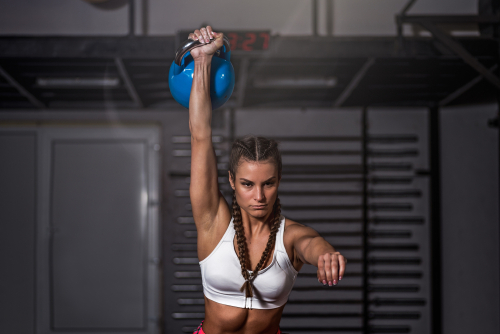
The one arm dumbbell snatch is a great whole-body exercise that blasts the shoulders and obliques. You also get explosive hip extension and this exercise can be used for cardiovascular endurance as well. These can be done with a kettlebell but it requires a bit more technique than the dumbbell version, so you don’t slam your wrist with the kettlebell on each rep.
How To Perform
To perform the single-arm dumbbell snatch, stand with your feet shoulder-width apart and a dumbbell in front of you. Squat down and grab the dumbbell with one hand, keeping your back straight and core engaged. Your other arm can be extended out for balance or placed on your hip.
In one swift movement, explode from your hips and legs to lift the dumbbell off the ground. As it ascends, quickly pull your body under the dumbbell and catch it overhead with your arm fully extended. Your knees should be slightly bent in a half-squat position at the catch. Stand up completely, then carefully lower the dumbbell back to the starting position.
Complete your set on one side, then switch to the other arm. The single-arm dumbbell snatch is a complex move that works multiple muscle groups, so make sure to start with a lighter weight to get the form right.
4 Turkish Get-Ups
Love it or hate it, the Turkish get-up is an awesome exercise. This one hammers the abs and obliques and also torches the shoulders. This is one you need to use good form on and take it slow.
If not, that weight might come crashing down on your head, and that would not be a good feeling. Here is a good video of a proper Turkish get-up so you can be sure to do it right and save your dome. There are also step by step instructions below.
How To Perform
The Turkish Get-Up is a complex, multi-step exercise, so let’s break it down. Start by lying on your back with a kettlebell or dumbbell in one hand, arm extended straight up. Bend the knee on the same side as the weight, foot flat on the ground, while the opposite leg remains straight. Your free arm should be out to the side at a 45-degree angle.
Press into your bent leg and free arm to roll onto your opposite elbow, then up onto your hand. Your focus should be on keeping the weight stable above you. Next, lift your hips off the ground, creating a bridge. Swing your straight leg under your body to kneel, then rise to a standing position.
To return, reverse the steps, paying close attention to your form and stability. This exercise is fantastic for building strength, coordination, and balance, but it’s crucial to perform it carefully and gradually increase weight.
3 Single Leg Hip Thrust
If you want a great booty then this is the one for you. Doing this exercise with the feet abs and shoulders elevated will increase the range of motion. Make sure to pause and squeeze at the top. Also, be sure to keep a neutral spine on this exercise.
How To Perform
To perform the single-leg hip thrust, you’ll need a bench or elevated surface behind you. Sit on the ground with your upper back against the bench and one foot planted firmly in front of you. Extend the other leg out straight. Hold your hands on the bench for support or place them on your hips.
Press through the heel of your planted foot and thrust your hips upward, lifting the extended leg as you go. Your aim is to form a straight line from your shoulder to your knee at the top of the movement.
Lower back down in a controlled manner. Complete your set on one leg before switching to the other. This exercise targets the glutes and hamstrings, and it’s a great way to work on strength and balance in each leg individually.
2 Single Arm Farmers Carry
The single-arm farmer’s carry is like the multitasking hero of gym exercises. At its core, it’s a walking exercise where you hold a heavy dumbbell or kettlebell in one hand and walk a set distance. Sounds simple, right? But the beauty is in the details. It hits multiple areas: grip strength, core stability, and shoulder endurance, to name a few.
Plus, it’s a real-life functional exercise. You’re basically training for all those times you have to carry grocery bags or a suitcase. It’s also perfect for identifying and fixing muscle imbalances, because you can’t cheat by relying on your stronger side. Overall, adding the single-arm farmer’s carry to your routine can bring a lot of bang for your buck.
How To Perform
To perform a single-arm farmer’s carry, you’ll need a heavy dumbbell or kettlebell. Stand up straight and hold the weight in one hand, letting it hang naturally at arm’s length. Make sure to engage your core, roll your shoulders back, and keep your chest up.
Start walking, taking slow and deliberate steps. Focus on keeping your torso upright and your core engaged to prevent leaning to one side. Walk for a set distance or time, then switch hands and repeat.
The key here is to maintain good posture and a strong grip throughout the exercise. It might look simple, but trust me, you’ll feel it working.
1 Bulgarian Split Squat
Bulgarian split squats are a top-notch unilateral exercise for targeting the legs and glutes. They’re like squats and lunges had a super-effective baby. By elevating your rear foot on a bench, you put extra emphasis on the front leg, demanding more work from the quads, hamstrings, and glutes.
Not only are you getting a leg workout, but you’re also getting a mini-core session since you have to stabilize your upper body. They’re perfect for identifying weak points between your legs and helping to even out imbalances. So, if you’re looking to ramp up your leg day, Bulgarian split squats are worth adding into the mix.
How To Perform
To do a Bulgarian split squat, you’ll need a bench or elevated surface behind you. Stand a couple of feet in front of the bench and place one foot on it, laces down. Keep your chest up, shoulders back, and core tight as you prepare for the movement.
Lower your body into a squat, bending your front knee and dropping your hips toward the ground. Aim to get your front thigh parallel to the floor or as close as you can.
Push through the heel of your front foot to return to the starting position. Complete all reps on one leg, then switch to the other. Keep your movements smooth and controlled, making sure to maintain your balance and posture throughout the exercise.
How to Program Unilateral Exercises
Bilateral lifting, where both sides of your body work in tandem, is the go-to for maxing out your strength. You can just pile on more weight because your entire body is in on the action. That doesn’t mean you should sleep on unilateral exercises though; they can still make you strong and muscular.
Heavy low-rep sets aren’t usually the best way to go for unilateral exercises. They can be riskier in terms of injury. These one-sided moves shine when it comes to fixing muscle imbalances, warding off injuries, and making sure your muscles develop evenly. They’re ideal to throw into your routine after your main strength exercises. You can even pair them with a bilateral move to hone in on a specific skill or to help you recover.
As for reps and sets, sticking to around 6-16 reps for 2-4 sets generally covers most strength and performance bases.
Final Word
In summary, incorporating unilateral exercises into your training routine offers a well-rounded approach to strength and fitness.
While bilateral movements remain the cornerstone for building maximum strength, unilateral exercises serve to fine-tune muscle imbalances, boost core stability, and add a layer of functional strength that pays dividends in everyday activities and athletic performance.
Blending the two types of movements can give you the best of both worlds—power and balance, strength and stability. So don’t sideline those one-sided moves; they might just be the missing piece in your fitness puzzle.

Ryan is a former college wrestler and lifelong fitness fanatic. He has run half marathons, done mud runs, placed in body transformation contests, coached wrestling, and now coaches girls’ soccer. Not to mention he has also tried literally hundreds of supplements over the years and has a vast and thorough supplement knowledge. He has written for Muscle & Strength, Testosterone Junkie, The Sport Review and other publications. He is also the editor-in-chief of this website and has over 25 years of experience in the fitness industry. Feel free to connect with him on his LinkedIn page below.

